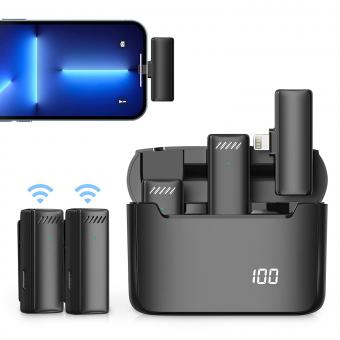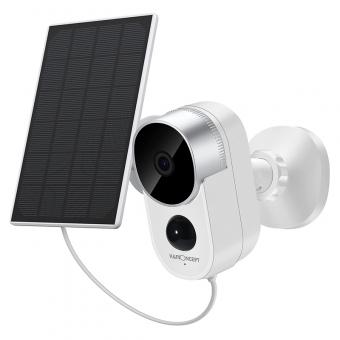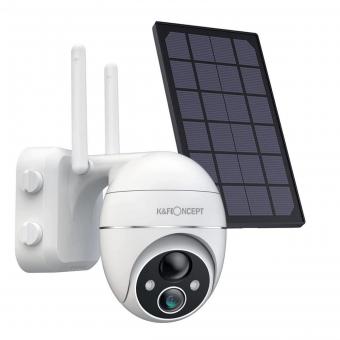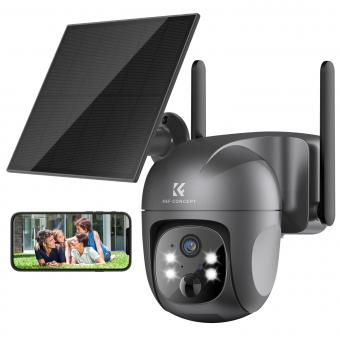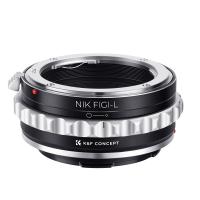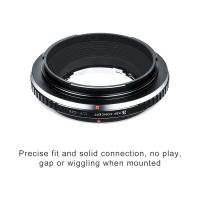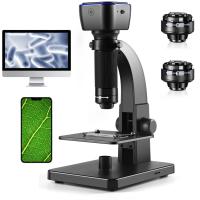What Is A Wireless Surveillance Camera ?
A wireless surveillance camera is a type of security camera that uses wireless technology to transmit video and audio signals to a receiver or a network. It eliminates the need for physical cables to connect the camera to a recording device or monitor. These cameras typically use Wi-Fi or other wireless protocols to connect to a local network or the internet, allowing users to remotely access and view the camera's feed from a computer, smartphone, or tablet. Wireless surveillance cameras are commonly used for monitoring and recording activities in homes, businesses, and public spaces, providing an added layer of security and peace of mind. They are often equipped with features such as motion detection, night vision, and two-way audio communication.
1、 Definition and Function of Wireless Surveillance Cameras
A wireless surveillance camera is a type of security camera that uses wireless technology to transmit video and audio signals to a receiver or a network. Unlike traditional surveillance cameras that require a physical connection to a recording device, wireless cameras can be placed anywhere within range of a wireless network, making them highly flexible and easy to install.
The main function of a wireless surveillance camera is to monitor and record activities in a specific area for security purposes. These cameras are commonly used in homes, businesses, and public spaces to deter crime, monitor suspicious activities, and provide evidence in the event of an incident. They can be accessed remotely through a computer, smartphone, or tablet, allowing users to view live footage and recordings from anywhere with an internet connection.
Wireless surveillance cameras have evolved significantly in recent years, with advancements in technology enhancing their capabilities. Many wireless cameras now offer high-definition video quality, night vision, motion detection, and two-way audio communication. Some models are even equipped with artificial intelligence algorithms that can detect and alert users to specific events, such as a person entering a restricted area or a package being delivered.
The latest point of view on wireless surveillance cameras is the integration of smart home technology. Many wireless cameras can now be connected to a smart home system, allowing users to control and monitor their cameras through voice commands or a centralized app. This integration provides a seamless and convenient way to manage home security.
In conclusion, a wireless surveillance camera is a versatile and convenient security solution that uses wireless technology to transmit video and audio signals. With advancements in technology, these cameras have become more sophisticated, offering high-definition video quality, night vision, motion detection, and integration with smart home systems. They play a crucial role in deterring crime, monitoring activities, and providing evidence in various settings.
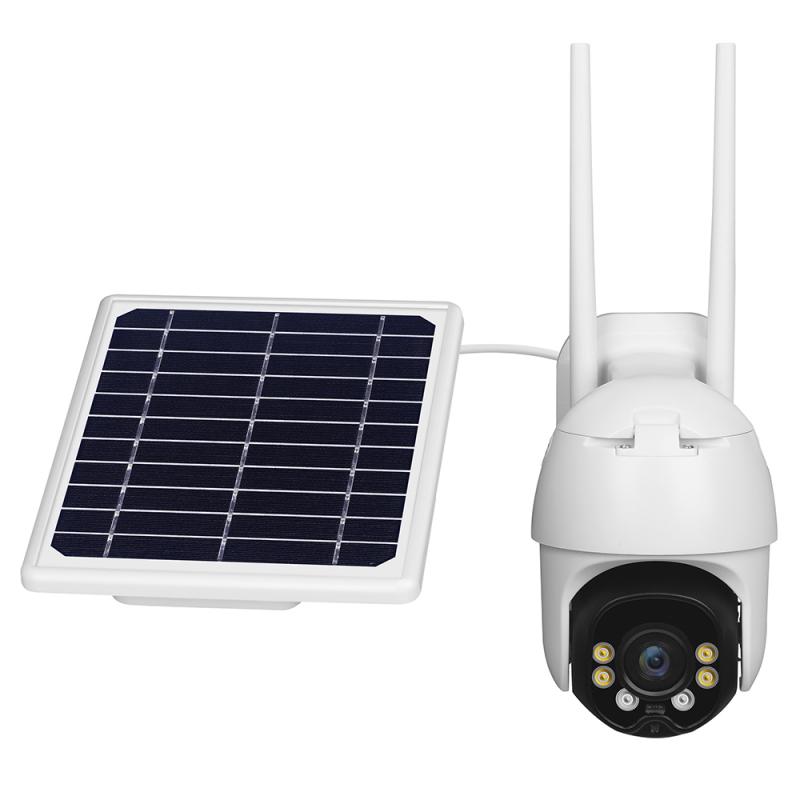
2、 Types and Features of Wireless Surveillance Cameras
A wireless surveillance camera is a type of security camera that uses wireless technology to transmit video and audio signals to a receiver or a network. Unlike traditional wired surveillance cameras, wireless cameras do not require physical cables to connect to a recording device or monitor. Instead, they use Wi-Fi or other wireless protocols to transmit data.
Wireless surveillance cameras come in various types and offer a range of features to suit different security needs. Some common types include indoor cameras, outdoor cameras, dome cameras, bullet cameras, and PTZ (pan-tilt-zoom) cameras. Each type has its own advantages and is designed for specific surveillance purposes.
The features of wireless surveillance cameras have evolved over time to meet the increasing demands of security systems. Many wireless cameras now offer high-definition video resolution, night vision capabilities, motion detection, two-way audio communication, and remote access through mobile apps or web browsers. Some advanced models even incorporate artificial intelligence algorithms for facial recognition or object detection.
The latest point of view in wireless surveillance cameras is the integration of smart home technology. Many wireless cameras can now be connected to smart home systems, allowing users to control and monitor their cameras through voice commands or smartphone apps. This integration provides a seamless and convenient way to manage home security.
Overall, wireless surveillance cameras offer flexibility in installation, as they can be placed anywhere within the range of the wireless network. They provide a convenient and effective solution for monitoring and securing homes, businesses, and public spaces. With advancements in technology, wireless surveillance cameras continue to improve in terms of video quality, features, and integration with other smart devices.
3、 Installation and Setup of Wireless Surveillance Cameras
A wireless surveillance camera is a type of security camera that uses wireless technology to transmit video and audio signals to a receiver or a network. Unlike traditional surveillance cameras that require a physical connection to a recording device, wireless cameras can be placed anywhere within range of a wireless network, making them highly flexible and easy to install.
The installation and setup of wireless surveillance cameras have become increasingly popular due to their convenience and versatility. With no need for extensive wiring or drilling, wireless cameras can be quickly and easily installed in various locations, both indoors and outdoors. This makes them an ideal choice for homeowners, businesses, and even law enforcement agencies looking to enhance their security measures.
The setup process typically involves connecting the camera to a wireless network, either through Wi-Fi or a dedicated wireless receiver. Once connected, the camera can be accessed and controlled remotely through a smartphone, tablet, or computer. Many wireless surveillance cameras also offer advanced features such as motion detection, night vision, and two-way audio, providing users with a comprehensive security solution.
From a latest point of view, wireless surveillance cameras have seen significant advancements in technology. High-definition video quality, improved wireless connectivity, and enhanced storage capabilities have made these cameras more reliable and efficient. Additionally, the integration of artificial intelligence and machine learning algorithms has enabled advanced video analytics, allowing cameras to detect and alert users of suspicious activities or potential threats.
Overall, the installation and setup of wireless surveillance cameras offer a convenient and effective way to monitor and protect properties. With their flexibility, ease of use, and advanced features, wireless cameras continue to be a popular choice for individuals and organizations seeking reliable security solutions.
4、 Benefits and Advantages of Using Wireless Surveillance Cameras
A wireless surveillance camera is a security device that uses wireless technology to transmit video and audio signals to a receiver or a network. It is a modern and advanced alternative to traditional wired surveillance cameras, as it eliminates the need for physical cables and allows for flexible installation and monitoring options.
The benefits and advantages of using wireless surveillance cameras are numerous. Firstly, the wireless nature of these cameras makes them easy to install and set up. They can be placed in any location within the range of the wireless network, without the need for drilling holes or running cables. This flexibility allows for quick and hassle-free installation, saving time and effort.
Secondly, wireless surveillance cameras offer remote monitoring capabilities. Users can access the camera's feed from anywhere with an internet connection, using a smartphone, tablet, or computer. This feature provides convenience and peace of mind, as users can keep an eye on their property or loved ones even when they are away.
Another advantage is the scalability of wireless surveillance systems. Additional cameras can be easily added to the network without the need for extensive wiring. This makes it convenient to expand the surveillance coverage as needed, without incurring significant costs or disruptions.
Furthermore, wireless surveillance cameras are less susceptible to tampering or sabotage. Unlike wired cameras, which can be disabled by cutting the cables, wireless cameras transmit data through encrypted signals, making them more secure and reliable.
Lastly, advancements in technology have led to the development of wireless surveillance cameras with improved image quality, night vision capabilities, and motion detection features. These cameras can capture high-resolution footage, even in low-light conditions, and can send alerts to users when motion is detected.
In conclusion, wireless surveillance cameras offer numerous benefits and advantages over traditional wired cameras. Their ease of installation, remote monitoring capabilities, scalability, security, and technological advancements make them an ideal choice for modern surveillance needs.

